#burlington bertie from bow
Text
The lyrics to Burlington Bertie, people! The lyrics to Burlington Bertie!
0 notes
Photo
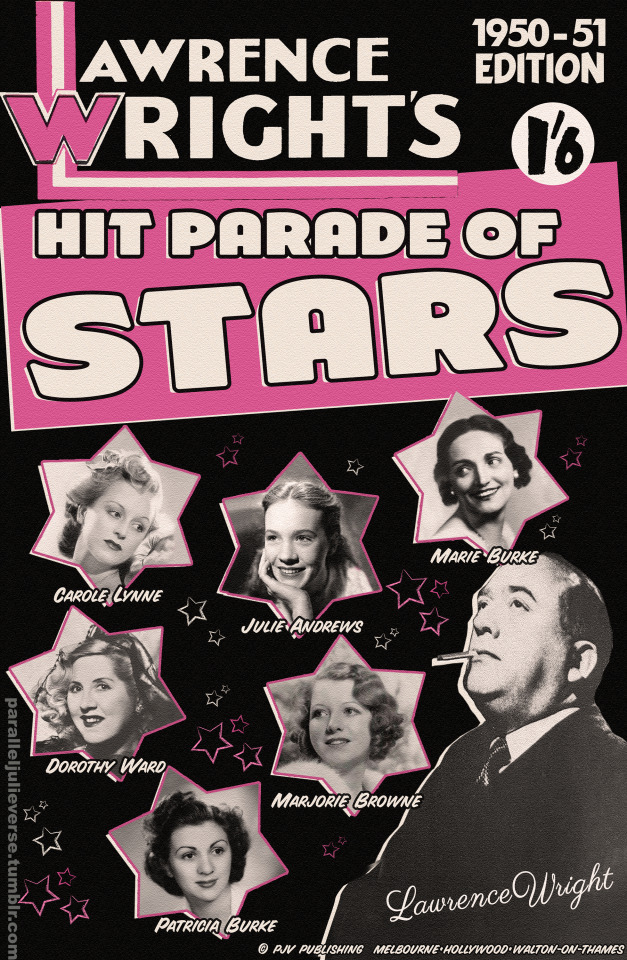


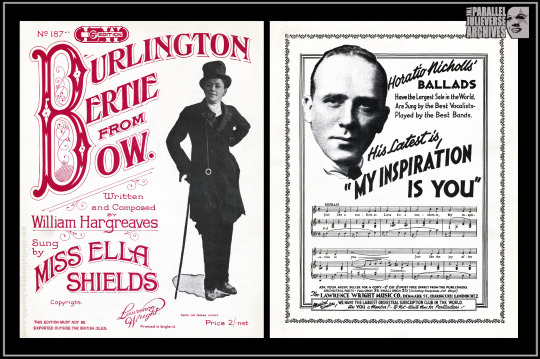

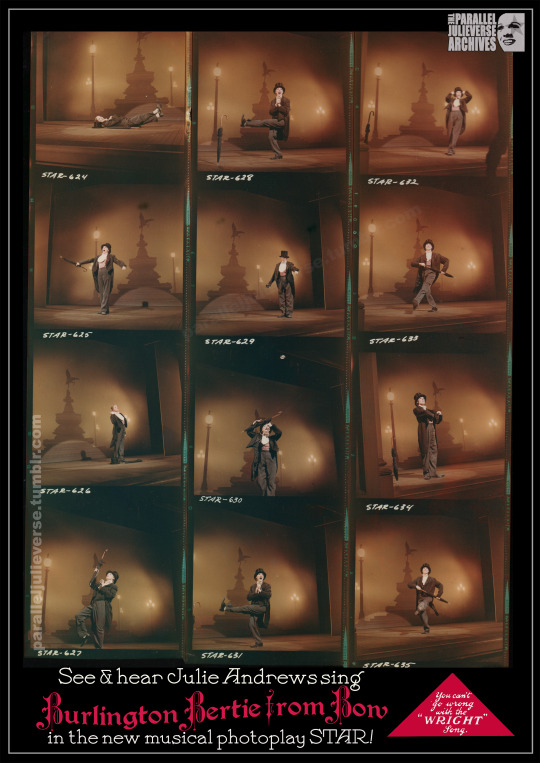
It’s been a while between posts here at the Parallel Julieverse, but we have finally managed to clear a bit of time from work, life, and other such annoyances to get back to what really matters: all things Julie! And in this post we highlight an interesting tidbit of trivia from late-1950 when Julie was appearing in Red Riding Hood at the Theatre Royal Nottingham, the subject of a recent 70th anniversary tribute post.
Although she had only just turned 15 when she was cast as the eponymous lead in Red Riding Hood, Julie Andrews was already an established juvenile star of considerable note. Her debut star-making turn as a 12-year-old child prodigy in Starlight Roof in 1947/48 garnered widespread media attention and it catapulted the young singer into a whirlwind period of touring performances, radio programmes, West End pantomimes, and even early television appearances. Julie’s subsequent casting as the resident singer in the hit BBC radio series, Educating Archie, augmented her fame further, bringing her voice into the sitting rooms of Britain on a weekly basis and making her a household name.
With this growing renown came equally expanded opportunities for cross-promotional marketing such as celebrity endorsements and advertising. A particular variant of celebrity promotion popular in the era was the staged 'star visit’ or what today might be termed ‘celebrity event marketing’ (Segrave 2005). Here the star would be invited to appear at a particular event or special occasion as a way of boosting public and media interest, while serving in return as a form of value-adding PR for the star and his/her professional ventures.
Julie was involved in several such ‘star visits’ during the three month run of Red Riding Hood. During rehearsals in mid-December 1950, she was invited as a VIP guest and honorary judge at the Annual Dance for Booth and Son, a major British apparel manufacturing company (‘Ilkeston’, 1). Around the same time, she paid a special visit to the Nazareth House for Children in Nottingham (‘Night’, 2), as well as the Borough Green Air Training Corps Cadets Open Night where “[p]art of the evening’s entertainment had to be cancelled in order to allow the enthusiastic younger generation to get her autograph” (‘Julie stopped’, 3).
One of the more fascinating such events -- and the one that we profile here -- was a courtesy visit to famed music impresario, Lawrence Wright. Today, Wright is little remembered, save by a handful of theatre history enthusiasts, but he was a major figure in the British entertainment industry of the early twentieth century (Wright 1988). Popularly dubbed the ‘Daddy of Tin Pan Alley’ and the ‘Monarch of Melody’, Wright started as a music composer in his hometown of Leicester where, under the pseudonym of Horatio Nicholls, he penned a string of popular songs such as “Down by the Stream", “Blue Eyes”, “Toy Drum Major”, and “Among My Souvenirs” (‘Alley’s Daddy’, 3).
Wright’s greatest success, however, came as a sheet music publisher and entertainment entrepreneur. In 1910, he chanced upon a catchy tune written by a local Leicester street singer called “Don’t Go Down the Mine, Daddy”. He promptly purchased the rights to the song and published it as part of his embryonic music company. A week after the song went on sale, there was a tragic mining disaster in Whitehaven in which 147 men and boys lost their lives. Recognising a potential marketing angle, Wright had a snipe printed across the top of the sheet music declaring that “Half the profits from the first ten thousand sold will go to the relief fund for the Whitehaven pit disaster” (Wright, 4). The song became a national sensation, selling over a million copies, and making Wright a small fortune. With the proceeds, he moved to London and set up shop as the ‘Lawrence Wright Music Company’ in Denmark Street, establishing what would become the city’s ‘Tin Pan Alley’.
Under the slogan, ‘You Can’t Go Wrong with the Wright Song’, Wright became the single biggest music publisher in the UK with an eventual catalogue of over 5000 songs which he leased to major theatre producers and singing artists of the day. In an era when many homes had a piano and singalongs in the parlour were a popular social pastime, Wright also sold his sheet music direct to the public through a nationwide chain of ‘Lawrence Wright Music Shops’. Ever the canny entrepreneur, Wright diversified his business holdings with a host of affiliate ventures. In 1926, he founded The Melody Maker, the first British periodical devoted to popular music, which remained in continuous publication right into the early-2000s. He launched a popular series of self-paced musical tutorials which taught a generation of young Britons how to play everything from the piano to the banjo. Wright also moved into theatre producing, mounting an annual summer revue, On With the Show at the North Pier Pavilion in Blackpool, which ran for 32 years and served as a showcase for many of the nation’s biggest variety acts (Wright 1988).
One of Wright’s more legendary professional pursuits was in the area of entertainment publicity. An inveterate showman, he would do anything to advertise his latest song or business venture, often falling foul of the authorities with some of his more colourful efforts. To promote his 1927 song, “Me and Jane in a Plane”, he chartered a bi-plane to fly at low altitude around the Blackpool Tower, while Jack Hylton and his Band played the song on board and dropped advertising leaflets to the startled crowds below. He offered £1000 to anyone who could disprove the title of another Wright song, “I’ve Never Seen a Straight Banana”, with the result that Denmark Street was awash with truckloads of fruit sent in by eager contestants. And what better way to launch a tune called “Sahara” than to dress a bevy of beautiful blondes as Arabian princesses and ride them on camels around Piccadilly Circus (Wright, 11; ‘King’, 7).
Less extravagant, but no less important to his business success, was Wright’s promotional use of stars. Across his fifty year career, Wright forged key professional relationships with many leading musical artists of the day. He even married a star: variety singer and comedienne, Betsy Warren, in 1933, though their union ended in divorce after only a few years. More enduring were his collaborations with the scores of stars who sang his songs and appeared in his shows. In 1960 to mark his 50th year in show business, Melody Maker published a special golden anniversary tribute to Wright that was brimming with congratulatory greetings from a cavalcade of stars old and new: everyone from George Formby, Jack Payne, and Billy Cotton to Harry Secombe, Connie Francis, and Frankie Vaughan (Wright, 18).
It was in this context that 15-year-old Julie Andrews found herself paying a promotional ‘star visit’ to Lawrence Wright in late 1950. The precise circumstances surrounding the visit are unknown. The young singer had an existing professional relationship of sorts with Wright, having included several of his songs in her concert repertoire such as “The Dream of Olwen” and “I Heard a Robin Singing”. Indeed, an article in the trade press from this time makes mention of Julie in relation to a newly published Wright number, “The Song of the Tritsch Tratsch” which she had started to perform in some of her concerts and, she was quoted as saying, it “always gets a grand reception” (‘Song Notes’, 4). Another likely influence behind the visit was Tom Arnold, the producer of Red Riding Hood. Arnold was a close business associate of Wright’s and one suspects he may have been instrumental in engineering the visit as a way of promoting his panto. Either way, at some point in November/December 1950, Julie dutifully trotted off to Wright’s office where, with photographers conveniently on hand, the young “panto starlet” was received by the impresario and what press reports termed a chorus of “his stars”.
It is this “chorus of stars” that makes the visit especially interesting from a theatre history perspective. While the names of the five female stars assembled to greet Julie may not ring many bells today, they were all celebrated theatrical luminaries of their day:
Carole Lynne (1918-2008): A glamorous actress and singer of the 1940s, Lynne starred in a string of big West End musicals including Black Velvet (1939), Old Chelsea (1943) opposite Richard Tauber, and a revival of Jill Darling (1945). She also appeared in a number of wartime comedy films such as Ghost Train (1941) and Asking For Trouble (1942) with Max Miller. In 1946, Lynne married famed theatre impresario, Lord Bernard Delfont -- the brother of Sir Lew Grade who would play a major role in Julie’s career -- and, after retiring from the stage in the early 50s, she became a prominent society hostess and patron to many theatre charities (’Carole Lynne’, 62).
Dorothy Ward (1890-1987): A noted beauty of the Edwardian stage, Ward rose to prominence in West End operettas such as The Dairymaids (1906) and Tom Jones (1907). She achieved her greatest fame, however, as a dashing pantomime Principal Boy, appearing in over 40 pantos across her 50 year career. In many of these shows, she played opposite her husband, Shaun Glenville, a noted panto Dame, and few Christmases passed without the pair “on the same stage, he in skirts and she in tights” ( ‘Obituary: Miss Dorothy Ward’, 14).
Marie Burke (1894-1988): A singer of remarkable versatility, Burke originally trained for an operatic career but found her niche in the lighter fields of operetta and musical theatre. She made a high profile debut as Isolde in Charles Cochran’s controversial 1919 production of Afgar, after which she spent several years touring in the United States and Australia. Burke had her greatest stage success playing the part of Julie in the premiere London production of Show Boat (1928). Thereafter, she headlined several major operettas including the London premiere of Waltzes from Vienna (1931-32) and its Broadway transfer as The Great Waltz (1934), and Don Juan de Mañara (1937) at Covent Garden. Burke had an equally successful screen career, appearing in over 70 films and TV programmes from the teens till the 1970s (‘Obituary: Marie Burke’, 12).
Patricia Burke (1917-2003) : The daughter of Marie, Patricia Burke was born in the proverbial trunk while her mother and father, tenor Tom Burke, were on a concert tour in Milan. Inevitably, she took to the boards herself as a teen, singing and dancing her way to fame in a string of West End musical successes of the 1930s -- with more than a few Julie connections. She made her professional debut in the 1933 premiere of Cole Porter’s Nymph Errant starring Gertrude Lawrence and later appeared alongside Beatrice Lillie in Happy Returns (1938). One of her greatest West End successes was as the female lead in The Lisbon Story (1943), a show which introduced the popular standard, “Pedro, the Fisherman” which Julie would later record. Following the war, Burke made an unexpected move into 'legit’ theatre, playing the female lead opposite Trevor Howard in a well received 1946 Old Vic production of The Taming of the Shrew, followed with a number of other equally high profile performances in classics such as As You Like It (1948), Jonson’s The Alchemist (1948) and Shaw’s Saint Joan (1948). Burke never forgot her popular roots, though, and she continued to alternate dramatic roles with musicals and pantos, as well as appearances in film and TV programmes (‘Patricia Burke’, p. 44).
Marjorie Browne (1910-1990): Another popular performer of the mid-century, Browne started her career in the mid-twenties as one of producer Charles Cochran’s ‘Young Lady’ beauties, scoring a major success in his revue One Damn Thing After Another (1927). Browne went on to perform widely in hit West End shows such as On Your Toes (1937) and Chu Chin Chow (1940), as well as touring productions of Rose Marie (1942-3), Hit the Deck (1944) and Good Night Vienna (1946). She also appeared in a number of British film musicals of the 30s and 40s including Lassie from Lancashire (1938), Laugh It Off (1940) co-starring Tommy Trinder, and I Didn’t Do It (1945) with George Formby.
It was, thus, quite the illustrious welcoming committee on hand to receive our young Julie. And, as much as the visit was a factitious PR event staged for the cameras by the ever-wily Lawrence Wright, there is still something deeply moving about its symbolic enactment of a generational passing of the theatrical torch. As representatives of the outgoing old guard, the five grand stars stand at the rear, poised with the confidence of a lifetime’s experience, charging their glasses in warm salute to the rising star of the next generation. That the women are bedecked with the emblematic accoutrements of mid-century celebrity -- furs, coiffure, champagne -- while, in the foreground, an adolescent Julie -- perched rather awkwardly on the corner of the desk, lanky legs akimbo -- is garbed in a homey juvenile ensemble of woollen coat, tartan skirt, ankle socks and Mary Janes -- cradling that perennial icon of cosy British domesticity, a cup of tea -- only adds to the symbolic poignancy.
By 1950, the tide was also starting to ebb for Lawrence Wright. Musical tastes were changing and audiences were fast moving on from the fireplace singalongs and end-of-pier entertainments with which he had built his career. A few short years later, he would stage his final summer revue in Blackpool in 1956, going into semi-retirement before passing in 1964 at age 76. His voluminous catalogue of songs, however, would endure. Prized as a valuable commercial property, the Lawrence Wright catalogue has been owned, at various times, by the Beatles and Michael Jackson, before being bought up by the Universal Music group (Horn, 595).
As a final Julie connection, years after her 1950 ‘star visit’ to the great man himself, Julie would once again sing a Lawrence Wright song when, as Gertrude Lawrence in the 1968 musical biopic, STAR!, she performed the classic WW1 music hall number, “Burlington Bertie from Bow”. Wright had purchased the rights to "Burlington Bertie” when it was first written in 1914 and it would remain a valuable possession of his corporate trunk. Even though “Burlington Bertie” was not in fact a song ever performed by Gertrude Lawrence, it perfectly captured the flavour of Edwardian music hall and provided an ideal showcase for Julie’s combined vocal and comic talents. The song was also something of a personal favourite for Julie. She had recorded the song previously for her 1962 album of music hall standards, and had even shared the stage in the late-40s with the original “Burlington Bertie” herself, the legendary Ella Shields (Andrews, 116). Julie’s performance of “Burlington Bertie” in STAR! would prove a highlight of that otherwise troubled film and she would continue to perform the number in concert well into the 1980s, proving indeed that “you can’t go wrong with a Wright song”!
Sources:
‘Alley’s Daddy Dead’, 1964. The Stage and Television Today, 21 March: 3.
Andrews, Julie. 2019. Home Work: A memoir of my Hollywood years. London: Weidenfeld & Nicolson.
D.G. 1964. ‘The King is Dead. Long Live the King!’, The Illustrated Chronicle. 22 May: 7.
Heyes, Joy 1991. ‘Obituary: Marjorie Browne.’ The Stage and Television Today, 21 February: 30.
Horn, David 2004. ‘Lawrence Wright Music Company’ in J. Shepherd et al, eds. Continuum Encyclopedia of Popular Music of the World : Media, industry, society. London: Continuum, pp. 594-95.
‘Ilkeston Firm’s Event’, 1950. The Nottingham Evening Post. 16 December: 1.
‘Julie stopped the show at cadet’s open night.’ 1950. The Chronicle and Advertiser. 15 December: 3.
“Night of their Lives: Children at panto. dress rehearsal’, 1950. The Nottingham Evening Post. 23 December: 2.
’Carole Lynne: Glamorous actress and musical theatre star who as Lady delfont became one of London’s leading theatrical hostesses’ 2008. The Times, 22 January: p. 62.
‘Obituary: Marie Burke’ 1988. The Times, 23 March: p.12
‘Obituary: Miss Dorothy Ward’ 1987. The Times, 22 January: p. 14.
‘Patricia Burke: Thirties musical star who proved her range with Shakespearean roles, but retained a love of pantomime.’ 2003, The Times, 27 November: p. 44.
Segrave, Kerry, 2005. Endorsements in Advertising: A social history. Jefferson, N.C.: McFarland.
‘Song Notes’ 1950. The Stage. 16 November, p. 4.
Wright, Lawrette, 1988. Lawrence Wright: Souvenirs for a century. Chards: Matthews Wright Press.
Copyright © Brett Farmer 2021
#julie andrews#lawrence wright#red riding hood#united kingdom#musical theatre#theatre history#music hall#variety#burlington bertie from bow#carole lynne#dorothy ward#marie burke#patricia burke#marjorie browne#ella shields#british
15 notes
·
View notes
Photo
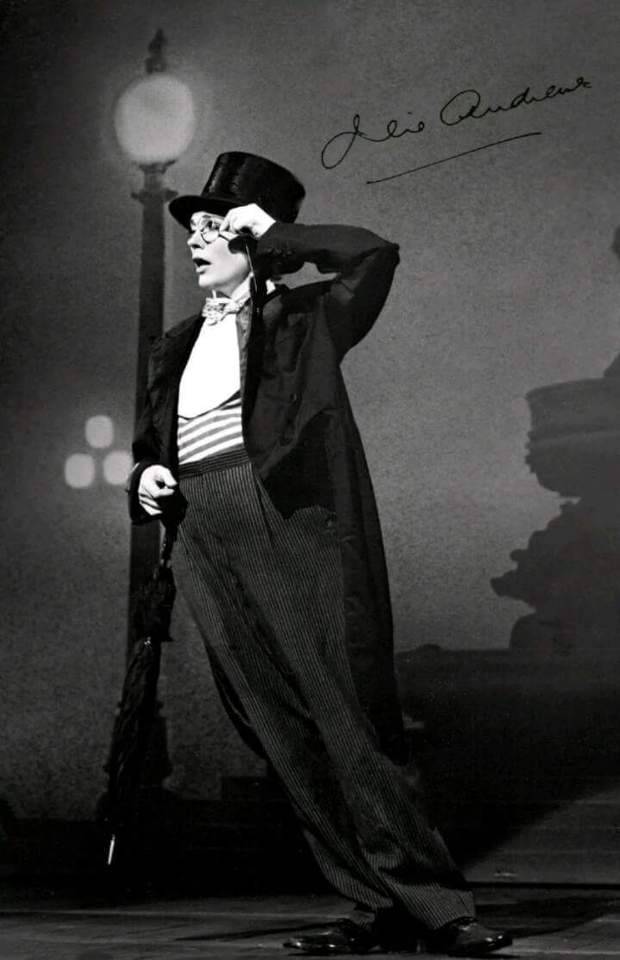
Julie Andrews in "Star!" (1968)
3 notes
·
View notes
Text
Good grief, I'd almost forgotten Champagne Charlie existed, until I got a comment on it this morning!
I'll have to sit down and look at it again at some point - it's a very good idea, if I do say so myself
I can't sit down to it now, tho, I've got trees to do today!
But, the comment reminded me, which is something (I'll have music hall songs in my head the rest of the afternoon I'm sure - go-to is always "Burlington Bertie from Bow")
#champagne charlie#downton abbey#tipping the velvet#I'll have to root through to find the notebook the untyped stuff's in
3 notes
·
View notes
Video
youtube
"A Pictorial History of the Art of Female Impersonation" by Chubby Oates...A look back in time at the bygone days of the 60s Drag Scene and beyond.In 1966 Chris Shaw and Arthur (Chubby) Oates wrote a book based on all the great drag acts through the late 19th and early 20th Centuries.This book has been recreated for you through video and overlaid with some of the songs played by some of the greatest comedians and drags of the last century. Enjoy a saucy jaunt down memory lane with some forgotten greats!!!!More at https://youtu.be/D8YnYfqxvKQ
#A Pictorial History of the Art of Female Impersonation#chubby oates#chris shaw#cross dresser#cross dressing#female impersonation#female impersonator#gay#scene#theatre#entertainment#theater#hetty king#fill em up#love em and leave em alone#ella shields#burlington bertie from bow#if you knew susie#burlington bertie#vesta tilley#the army of todays alright#its part of a policemans duty#im following in fathers footsteps#wilkie bard#put me upon an island#douglas byng#im a mummy an old egyptian queen#im one of the queens of england#mrs lowsborough#lizzie the pre war flivver
0 notes
Note
lol do the headcannon thing for Flight
You know me well. As does @soot-and-snide.
What they smell like: A mix of tobacco, coconut oil, and ylang ylang (the latter two being the main ingredients of Victorian men’s hair oil, which he seems to use quite a bit of.
How they sleep (sleeping position, schedule, etc): Curled up on his side for maximum feeling of secureness. I’d guess he’s got a strict early evening routine (reading, warm milk, cigarette, bed) and gets up early as well. Tbh, there’s probably not much for him to do at night since he doesn’t drink and the streets are dangerous.
What music they enjoy: Judging from his reaction to “Skibbereen” in Dynamite and a Woman, traditional-style ballads. A lot of music hall songs that were popular at the time were on the raunchy side, and I feel like pretty much anything sexual makes him uncomfortable. Not that it would be his style, but the 1915 song “Burlington Bertie from Bow” reminds me of him. Poor kid from the East End dressing up and pretending to be a toff in Westminster.
How much time they spend getting ready every morning: Actually getting dressed, about 10/15 minutes. Making sure that everything about his clothes and hair is immaculate? Half hour.
Their favorite thing to collect: Money would be an issue (although I feel like if he had it he’d collect pocket watches), but DaMo has said in interviews that he’s cocky about his detective skills, so he probably keeps newspaper clippings about cases he’s worked on.
Left or right-handed: Right-handed, canonically.
Religion (if any): Catholic and pretty hardcore about it, as we see on the show.
Favorite sport: Football. It was super popular among the lower classes because it’s easy to learn and you don’t need a lot of equipment. Gaelic football didn’t get popular until 1897 and he would have been in England then, so just regular football.
Favorite touristy thing to do when traveling (museums, local food, sightseeing, etc): I feel like he doesn’t travel a lot, so sightseeing would be exciting just because it’s not the same five blocks he sees every day.
Favorite kind of weather: Rain. Sun would be uncomfortable in a wool suit (especially with his skin tone!), and snow would make the streets a mess. This may be me projecting, but I think he’d find the rain soothing.
A weird/obscure fear they have: It’s weird, but there’s a reason! I think he freaks out around people who are crazy to the point of ranting. He says in DaaW that his mother died of typhus when he was five, and a major symptom of typhus is delirium from the high fever. This was an era where rural people lived in one-room houses, so as a child Flight probably had to spend an extended period of time in a building the size of a dorm with his delirious mother before she died. That would mess up an adult, let alone a little kid.
The carnival/arcade game they always win without fail: Sure as hell not the shooting range, that’s for sure. I feel like a lot of carnival games require skills like aim and brute strength that he just doesn’t have. His past as a fraudster would probably make him a good carnival barker, though!
6 notes
·
View notes
Text
Ella Shields Height
5 feet 5 inches (167 cm)
American singer; famed for the song “Burlington Bertie from Bow.” On Instagram, Ella Shields states, “I’m 5 feet 5 inches.”
View On WordPress
0 notes
Video
youtube
I love this scene from "STAR!"
7 notes
·
View notes
Text
I'm very much in a dressing-up sort of mood, thinking on Downton Abbey and Tipping the Velvet, but it's half past nine and I can't really be bothered, so I think the answer is to theatrically sing Burlington Bertie from Bow while my dinner cooks
1 note
·
View note
Video
youtube
Your daily dose of Julie Andrews
Burlington Bertie from Bow
7 notes
·
View notes
Text
Pfft haha
I'm quite sure Ella Shields never took the line "I haven't a shirt" in Burlington Bertie from Bow literally
But it would be funny
0 notes
Text
Burlington Bertie from Bow stuck in my head again
"my pose, though ironical, shows that my monocle holds up my face, keeps it in place, stops it from slipping away"
"I'm Bert! Praps you've 'eard of me, Bert! Know you've word of me!"
I think it was Ella Shields sung the version I know? Or Hetty King? Forget, but I think it was Vesta Tilley sung the original one, before Ella Shields' fella rewrote it for her? Think that's right
1 note
·
View note
Photo



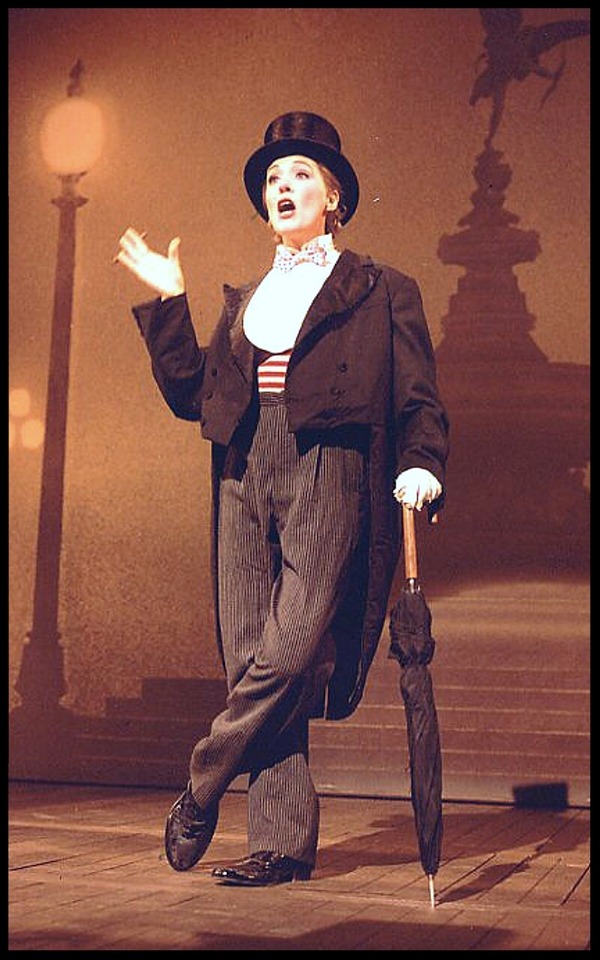
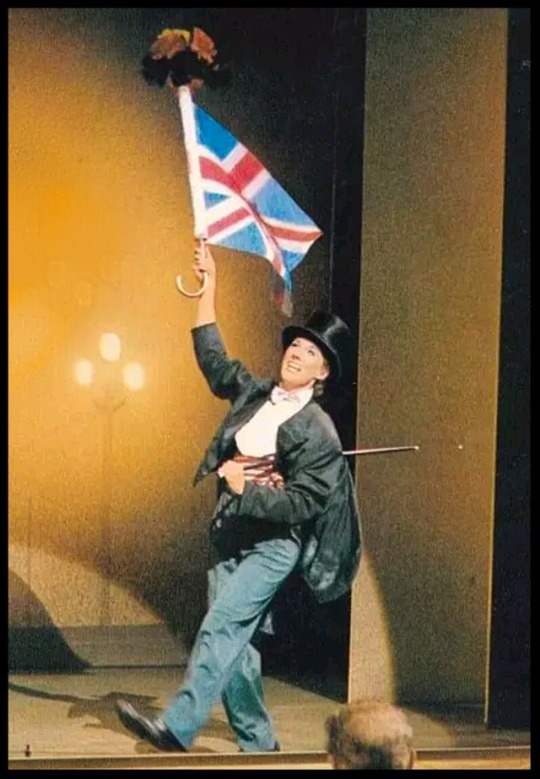




Julie Andrews in "Star!" (1968)
7 notes
·
View notes